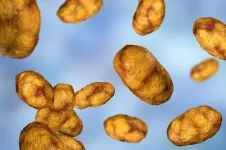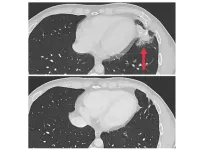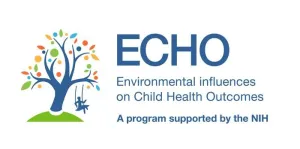(Press-News.org) Toxoplasma gondii is a parasite responsible for toxoplasmosis, a lifelong chronic infection prevalent in about 30% of the human population. It poses little harm to healthy individuals but can result in severe consequences for immunocompromised people. If infection occurs during pregnancy, the parasite can cross the placenta and cause retinal or neurological issues in the developing fetus, and potentially death in severe cases.
There is currently no vaccine for Toxoplasma infection, and the biological mechanism by which the parasite affects the metabolism of host cells is still understudied.
In new research published in the journal mBio, Morgridge researchers describe how Toxoplasma infection changes host cell metabolism over the course of infection using the power of optical metabolic imaging (OMI) for the first time.
Assistant scientist Gina Gallego-Lopez, an alumna of the Morgridge Postdoctoral Fellow program and first author of the study, spearheaded this collaboration between her co-advisors, Morgridge Investigator in biomedical imaging Melissa Skala and UW–Madison professor in medical microbiology and immunology Laura Knoll.
The Knoll Lab focuses on studying T. gondii and other related parasites such as Entamoeba, while the Skala Lab develops biomedical imaging tools like OMI to monitor cellular activity.
“I have experience with parasites, but the field of optics was new for me,” Gallego-Lopez says. “I wanted to try imaging Toxoplasma gondii to see how it is affecting the metabolism of the host cell, and the best option was to use OMI because it’s non-invasive.”
The non-invasive approach is important to be able to observe real-time changes. OMI allows researchers to monitor metabolism within live cells by detecting fluorescent activity already present in the cells. This is done without having to fix or stain samples that ultimately kill the cells.
In this study, the researchers observed changes in redox biology, measured by the chemical activity of the metabolites NAD(P)H and FAD. They found that over the course of a 48-hour infection, infected host cells became more oxidized and NAD(P)H mean lifetime increased. This result shows that the parasite can fundamentally change the metabolism of the host cell.
Additionally, they confirmed metabolic changes in the levels of glucose, lactate and ROS production — all factors associated with changes in redox biology in infected cells.
“The parasite needs energy to be able to replicate — we see those changes are different in early infection with the increase of glucose that reduces over time as well as the redox ratio in late infection,” says Gallego-Lopez. “So we have a first-hand scenario of what is happening at the level of redox biology in cells infected with Toxoplasma gondii.”
Gallego-Lopez was also curious about metabolic changes associated with the mechanism known as “kiss and spit,” where T. gondii interacts with the surface of the host cells before full invasion.
“One cell may be infected while the cells around it are not; it looks like the parasite ‘kisses’ those cells and then injects some proteins — kiss and spit,” she says. “To our surprise we were able to see similar changes as the full infection. So, it looks like a simple ‘kiss’ from the parasite is enough to induce changes in the host cell.”
While there are still many questions to be answered, Gallego-Lopez says that OMI is a perfect tool to use in this scenario since it can accurately measure very small changes. After correlating OMI data and metabolomic data with gene expression analysis, the next steps include further study of genetic targets that are involved in these pathways.
“We need to go in detail — what specific gene or specific protein — to be able to design better targets for vaccine development or drug treatment but first we need to know the changes associated in the host by infection,” Gallego-Lopez says.
Ultimately, Gallego-Lopez hopes to establish her own lab to continue studying apicomplexan parasites like Toxoplasma and Cryptosporidium, the latter of which is associated with colorectal cancer.
“I want to understand how it's possible that these parasites induce changes in the host to be able to induce cancer with time,” she says. “I'm using Toxoplasma as a model to understand the changes to later be able to apply in Cryptosporidium. That is my goal.”
###
As an independent research organization, the Morgridge Institute for Research explores uncharted scientific territory to discover tomorrow’s cures. In affiliation with the University of Wisconsin–Madison, we support researchers who take a fearless approach to advancing human health in emerging fields such as regenerative biology, metabolism, virology and biomedical imaging. Through public programming, we work to inspire scientific curiosity in everyday life. Learn more at: morgridge.org (https://www.morgridge.org/)
END
Advanced imaging reveals how a parasitic ‘kiss’ alters cell metabolism
2024-07-11
ELSE PRESS RELEASES FROM THIS DATE:
New medication for stress urinary incontinence? Investigational drug shows promise
2024-07-11
Waltham — July 11, 2024 — An investigational medication designated TAS-303 shows efficacy and safety in treatment of women with stress urinary incontinence (SUI), reports a placebo-controlled clinical trial in the August issue of The Journal of Urology®, an Official Journal of the American Urological Association (AUA). The journal is published in the Lippincott portfolio by Wolters Kluwer.
"Our study adds new evidence that TAS-303 reduces the frequency of incontinence episodes in women with SUI, without the worrisome adverse ...
Warm or cold: Hibernation status matters when white-nose syndrome pathogen infects bats
2024-07-11
The fungal pathogen that causes white-nose syndrome (WNS) in bats uses different cell entry strategies depending on the host’s hibernation status – cold and inactive, or warm and active. The findings, which required the authors to develop a new bat cell line, highlight potential therapeutic interventions against WNS using epidermal growth factor receptor inhibitors, like the Food and Drug Administration-approved drug gefitinib. Bats – the second-most diverse group of mammals – play an important part in mitigating agricultural pests and the spread of insect-borne disease. However, millions of hibernating bats across North America are dying from ...
Barley’s rapid climate-driven adaption revealed in century-old biological experiment
2024-07-11
Leveraging one of the world’s oldest biological experiments – which began in 1929 – researchers have uncovered how a major crop, barley, was shaped by both agricultural pressures and its changing natural environment. The results underscore the power of long-term studies in understanding the dynamics of adaptive evolution. The survival of cultivated plants after their dispersal across different environments is a classic example of rapid adaptive evolution. For example, barley, an important neolithic crop, spread widely after domestication over 10,000 years ago to become a staple source of nutrition for humans and livestock throughout Europe, Asia, and Northern ...
Stratospheric air intrusions drive new particle formation in the upper troposphere
2024-07-11
New atmospheric particles form when stratospheric air intrudes into the troposphere below, according to a new study, revealing a previously unrecognized mechanism for new particle formation (NPF) in the upper troposphere. The finding suggests that NPF in these regions aloft occurs frequently and over large geographic regions, representing an important source of particles in the free troposphere. Aerosol particles smaller than one micron in diameter are abundant in the troposphere, the lowest layer of ...
Respiratory bacteria ‘turns off’ immune system to survive
2024-07-11
Researchers from The University of Queensland have identified how a common bacterium is able to manipulate the human immune system during respiratory infections and cause persistent illness.
The research, led by Professor Ulrike Kappler from UQ’s School of Chemical and Molecular Biosciences, studied the virulence mechanisms of Haemophilus influenzae, a bacterium that plays a significant role in worsening respiratory tract infections.
“These bacteria are especially damaging to vulnerable groups, such as those with cystic fibrosis, asthma, the elderly, ...
Structured electrons with chiral mass and charge
2024-07-11
Have you ever placed the palm of your left hand on the back of your right hand, in such a way that all fingers point in the same direction? If you have, then you probably know that your left thumb will not touch its right counterpart. Neither rotations nor translations nor their combinations can turn a left hand into a right hand and vice versa. This feature is called chirality.
Scientists at the University of Konstanz have now succeeded to imprint such a three-dimensional chirality onto the wave function of a single electron. They used laser light to shape the electron’s matter wave into left-handed or right-handed coils ...
Learning dance moves could help humanoid robots work better with humans
2024-07-11
Engineers at the University of California San Diego have trained a humanoid robot to effortlessly learn and perform a variety of expressive movements, including simple dance routines and gestures like waving, high-fiving and hugging, all while maintaining a steady gait on diverse terrains.
The enhanced expressiveness and agility of this humanoid robot pave the way for improving human-robot interactions in settings such as factory assembly lines, hospitals and homes, where robots could safely operate alongside humans or even replace them in hazardous environments like laboratories or disaster sites.
“Through expressive and more human-like ...
Women and social exclusion: The complicated nature of rejection and retaliation
2024-07-11
New research from the University of Ottawa (uOttawa) has provided a complicated glance into young women’s responses to interpersonal conflict, with retaliation often the answer to rejection and perceived social exclusion by other females.
The study, published in Nature’s Scientific Reports, highlights the complicated nature of women’s interpersonal relationships by examining the stress arising from rejection, and if the personal characteristics of those imposing the rejection influences ...
Immunotherapy approach shows potential in some people with metastatic solid tumors
2024-07-11
Early findings from a small clinical trial provide evidence that a new cellular immunotherapy approach may be effective in treating metastatic solid tumors. In the trial, researchers from the National Institutes of Health (NIH) genetically engineered normal white blood cells, known as lymphocytes, from each patient to produce receptors that recognize and attack their specific cancer cells. These initial findings are from people with metastatic colorectal cancer who had already undergone multiple earlier treatments. The personalized immunotherapy shrank tumors in several patients and was able to keep the tumors from regrowing for up to seven months. ...
Neighborhood impact on children's well-being shifted during COVID-19 pandemic, ECHO study suggests
2024-07-11
The COVID-19 pandemic significantly disrupted daily life and has raised concerns about its impact on children’s well-being. A new study from the NIH Environmental influences on Child Health Outcomes Program (ECHO) sheds light on how a neighborhood’s physical and social environment influenced a child’s well-being before and during the pandemic.
According to an analysis of ECHO Cohort data, the neighborhood environment was less likely to be associated with child well-being during the ...





